
The Untamed Wilderness of Xekong Province
Discover the untouched natural beauty and rich cultural heritage of Xekong Province in Laos, a hidden gem perfect for nature lovers and adventure seekers.
Xekong Province, nestled in the southern region of Laos, is a hidden gem that offers an unspoiled natural beauty. This destination is perfect for tourists looking to escape the usual hustle and bustle and immerse themselves in the tranquility of untouched landscapes. The province is known for its scenic rivers, dense forests, and the majestic Bolaven Plateau, which provides a cool escape from the tropical heat. Visitors to Xekong can explore the many waterfalls that dot the province, such as the Tad Faek and Tad Se Noi, which offer breathtaking views and refreshing swimming spots. The region is also home to ethnic minority villages, where tourists can learn about the rich cultural heritage and traditional lifestyles of the Lao people. The warm and welcoming locals add to the charm of this remote destination. Adventure seekers will find plenty to do in Xekong, from trekking through lush rainforests to kayaking along the Se Kong River. The province's diverse flora and fauna make it a paradise for nature enthusiasts and bird watchers. With its off-the-beaten-path allure and myriad of outdoor activities, Xekong Province promises an unforgettable experience for every traveler.
Local tips in Xekong Province
- Visit during the dry season from November to April for the best weather and easier access to remote areas.
- Hire a local guide for trekking and exploring waterfalls to ensure safety and uncover hidden spots.
- Respect the local customs and traditions when visiting ethnic minority villages.
- Bring insect repellent and appropriate clothing for jungle treks.
- Stay in eco-lodges or homestays to support sustainable tourism and gain a deeper cultural experience.
The Untamed Wilderness of Xekong Province
Xekong Province, nestled in the southern region of Laos, is a hidden gem that offers an unspoiled natural beauty. This destination is perfect for tourists looking to escape the usual hustle and bustle and immerse themselves in the tranquility of untouched landscapes. The province is known for its scenic rivers, dense forests, and the majestic Bolaven Plateau, which provides a cool escape from the tropical heat. Visitors to Xekong can explore the many waterfalls that dot the province, such as the Tad Faek and Tad Se Noi, which offer breathtaking views and refreshing swimming spots. The region is also home to ethnic minority villages, where tourists can learn about the rich cultural heritage and traditional lifestyles of the Lao people. The warm and welcoming locals add to the charm of this remote destination. Adventure seekers will find plenty to do in Xekong, from trekking through lush rainforests to kayaking along the Se Kong River. The province's diverse flora and fauna make it a paradise for nature enthusiasts and bird watchers. With its off-the-beaten-path allure and myriad of outdoor activities, Xekong Province promises an unforgettable experience for every traveler.
When is the best time to go to Xekong Province?
Iconic landmarks you can’t miss
Tad Gneuang Waterfall
Discover the breathtaking beauty of Tad Gneuang Waterfall, a serene oasis in Laos offering stunning views, hiking trails, and vibrant wildlife.
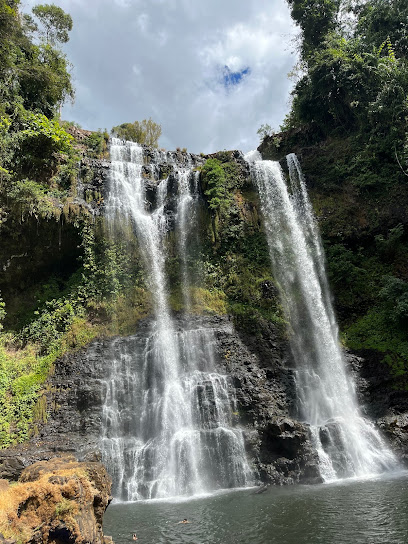
Fandee Island - Tad Lo - Bolaven Loop Pakse - ດອນຝັນດີ
Discover Fandee Island on the Bolaven Loop: A serene retreat blending adventure and relaxation amidst stunning waterfalls and lush landscapes.

Mama Pap
Discover authentic Laotian flavors at Mama Pap, a beloved restaurant in Beng, where each dish celebrates the richness of local culinary traditions.
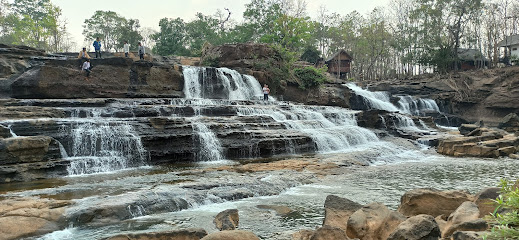
Ongkeo Monument Park
Discover the serene beauty and cultural heritage of Ongkeo Monument Park in Salavan, a peaceful memorial park perfect for reflection and exploration.
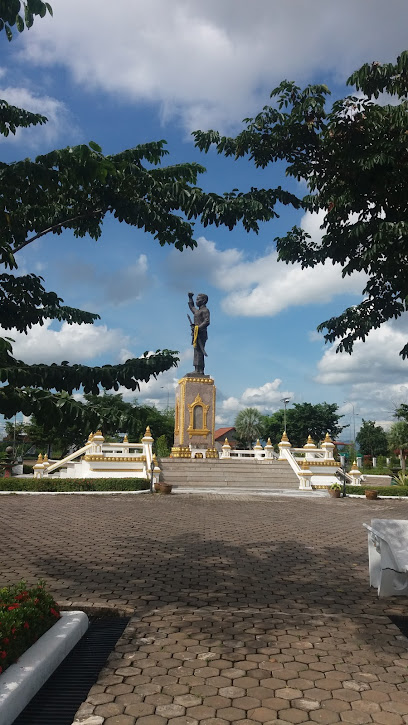
Shared Happy Farm
Explore the beauty of organic farming and serene landscapes at Shared Happy Farm in Houayxay, Laos – a unique retreat for nature lovers.
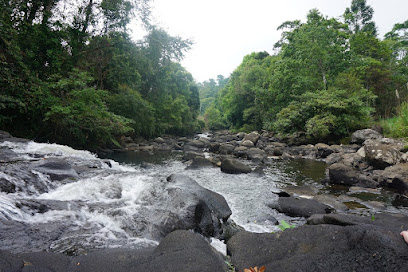
Tad Hang Waterfall
Experience the serene beauty of Tad Hang Waterfall in Beng, Laos, a hidden gem perfect for nature lovers and adventure seekers.
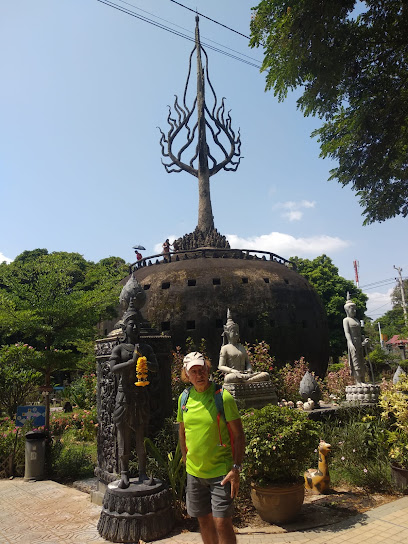
Somphone Homestay Guesthouse
Discover the charm and hospitality of Laos at Somphone Homestay Guesthouse in Thateng, where every stay feels like a cultural journey.
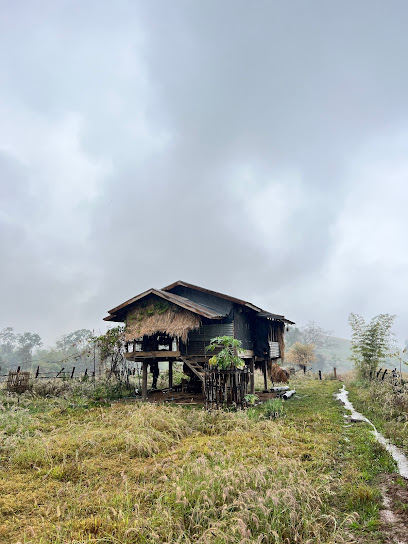
Bolaven Plain Laos
Explore the lush landscapes and cascading waterfalls of Bolaven Plain, Laos, a serene haven for nature and culture enthusiasts alike.
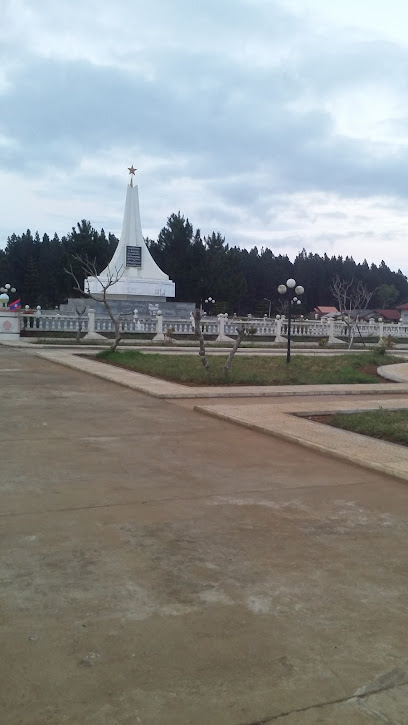
Tad Faed Waterfall
Experience the serene beauty of Tad Faed Waterfall, a stunning natural attraction in Laos perfect for nature lovers and adventure seekers.
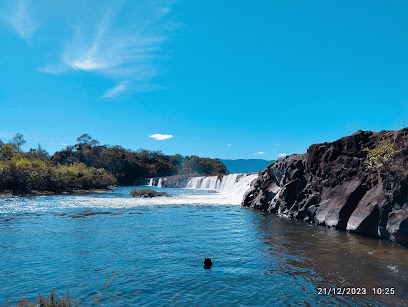
Sekong Monument
Explore the Sekong Monument, a serene memorial park in Laos that honors resilience and promotes peace amidst stunning natural beauty.
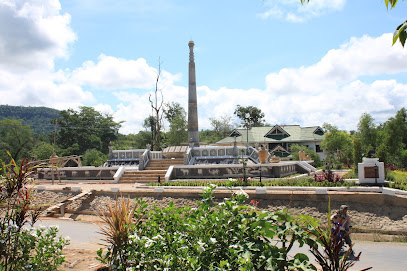
Cafe' Sinouk Sekong By Pyk
Experience the authentic flavors of Laos at Café Sinouk Sekong in Xekong province, where every dish tells a story.
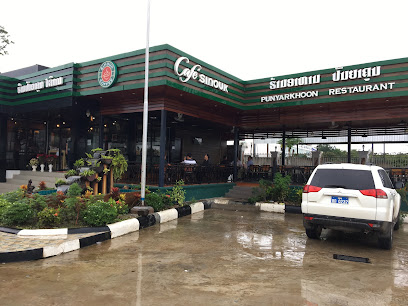
Xekong Power Plant Company Limited
Explore the impressive Xekong Power Plant, where nature meets modern engineering in the heart of Laos' stunning landscapes.
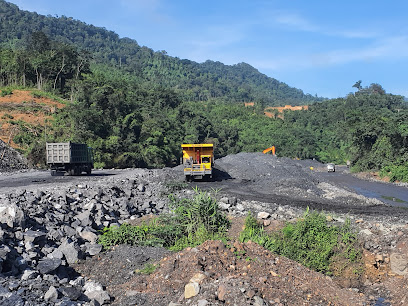
Sekong Province Laos
Discover the serene beauty and rich culture of Sekong Province, Laos, an untouched jewel for adventurous travelers seeking authentic experiences.
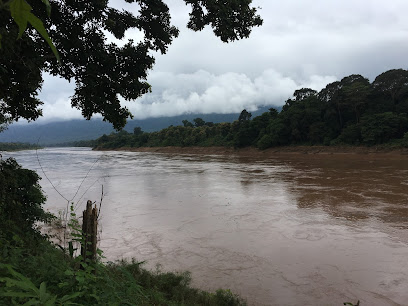
Nong Fa Lake
Experience tranquility and natural beauty at Nong Fa Lake, a hidden gem in Laos perfect for relaxation and outdoor adventures.
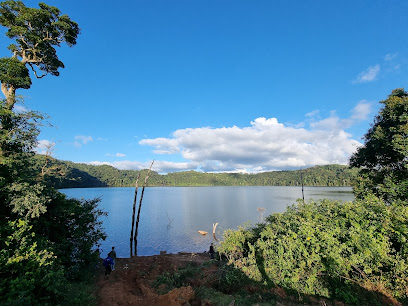
Dong Ampham National Biodiversity Conservation Area
Discover the untouched beauty and rich biodiversity of Dong Ampham National Biodiversity Conservation Area, a haven for nature lovers in Ta La, Laos.

Unmissable attractions to see
Ongkeo Monument Park
Discover the tranquil beauty and rich heritage of Ongkeo Monument Park, a serene memorial park in Salavan, Laos.
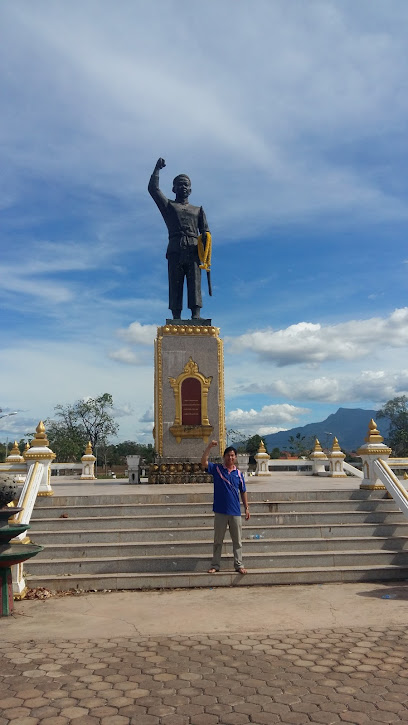
Tad Soung Waterfall
Explore the tranquility of Tad Soung Waterfall in Laos, a hidden natural treasure perfect for adventure and relaxation amid stunning landscapes.
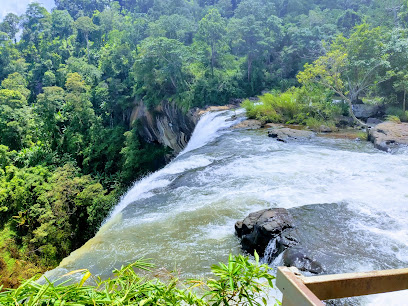
Sekong Monument
Explore the Sekong Monument, a serene memorial park in Laos dedicated to peace, history, and natural beauty, perfect for reflection and exploration.
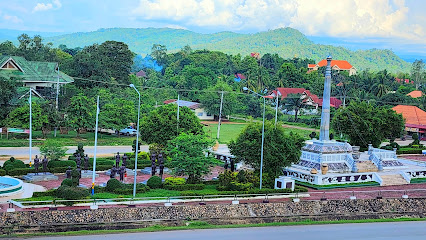
Viewpoint on scenic loop
Experience the breathtaking panoramas at the Viewpoint on Scenic Loop, a stunning natural gem in Houayxay, Laos, perfect for nature lovers and photographers.
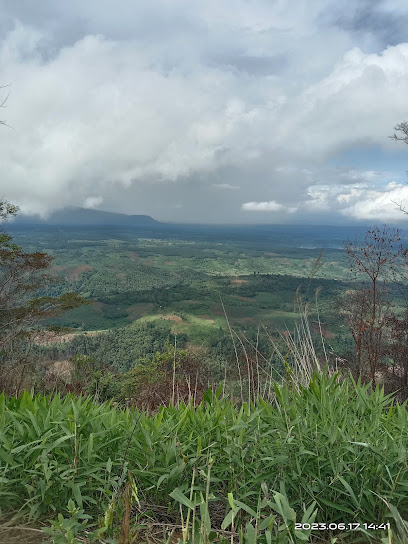
Tad Hua Khon Waterfall
Experience the breathtaking beauty of Tad Hua Khon Waterfall, a serene escape in Laos surrounded by lush landscapes and vibrant wildlife.
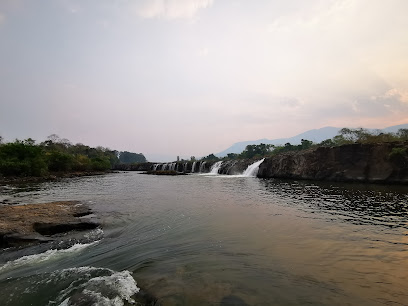
ขัวอู่ตาดเลาะ
Experience the cultural richness and breathtaking scenery at ขัวอู่ตาดเลาะ in Beng, Laos - a traveler’s paradise.
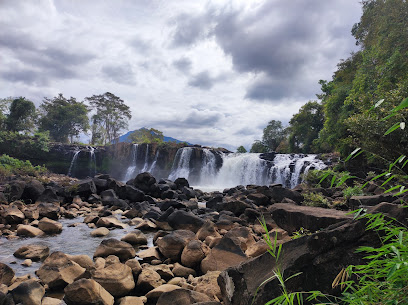
Tadlo waterfall
Experience the breathtaking beauty of Tadlo Waterfall, a hidden gem in Laos, surrounded by lush landscapes and rich biodiversity.

Dakcheung lake
Explore the tranquil beauty of Dakcheung Lake, a serene park offering breathtaking views, outdoor activities, and a perfect escape into nature.
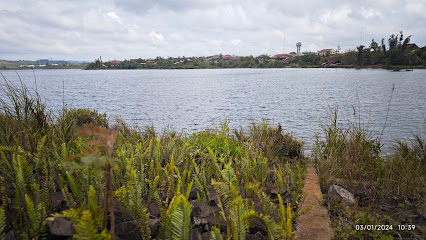
ແຄ້ມເຂື່ອນໄຟຟ້າເຊກອງ5
Experience the tranquility and natural beauty of Po Ro Park, a peaceful oasis in the heart of nature, perfect for relaxation and family outings.
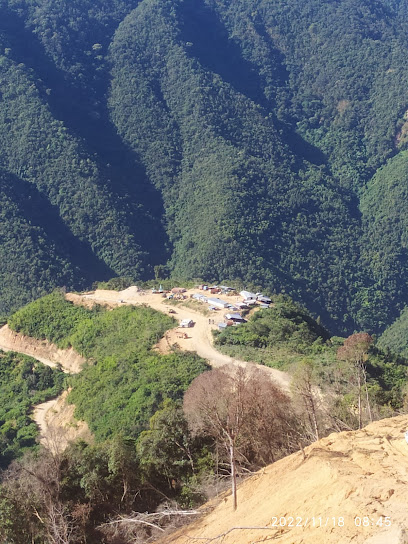
Leuammalaysy Garden House
Experience the serene beauty of Leuammalaysy Garden House in Phon, Laos, a tranquil escape showcasing vibrant flora and local culture.

ກະທ້ອມນ້ອຍ
Explore the serene Gardens of Phon, a lush retreat filled with vibrant flora and tranquil pathways, perfect for relaxation and nature lovers.

Parking panorama Tad Soung Waterfall
Discover the breathtaking beauty of Tad Soung Waterfall, a serene natural attraction in Lao Ngarm, perfect for nature lovers and adventure seekers.

Villada Cottage & Restauran
Explore stunning hiking trails and enjoy traditional Lao cuisine at Villada Cottage & Restaurant in the heart of Dak Cheung.

้huay-ta-ne
Discover the serene beauty and cultural richness of Huay-Ta-Ne in Achiang, an enchanting tourist attraction perfect for relaxation and exploration.

Essential places to dine
Dyen Sabai Restaurant
Experience authentic Lao cuisine by the Mekong River at Dyen Sabai Restaurant in Luang Prabang - a true taste of local flavors.
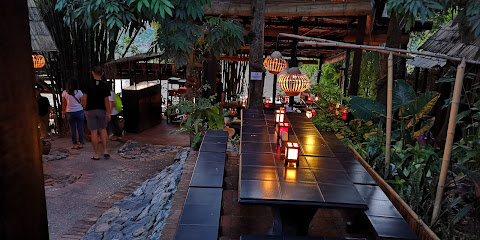
BOUANG Asian Eatery
Discover authentic Lao cuisine at BOUANG Asian Eatery in Luang Prabang - where flavors meet tradition in a vibrant atmosphere.
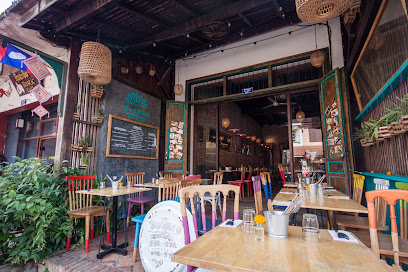
L’Elephant
Experience exquisite French cuisine at L’Elephant in Luang Prabang - where culinary artistry meets local flavors.
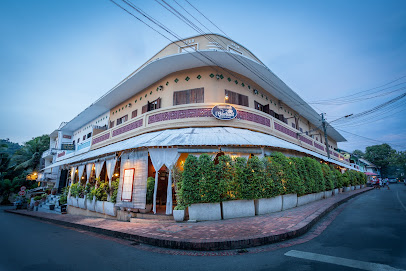
Fandee Island - Tad Lo - Bolaven Loop Pakse - ດອນຝັນດີ
Experience adventure and relaxation at Fandee Island in Tad Lo - where family fun meets natural beauty.
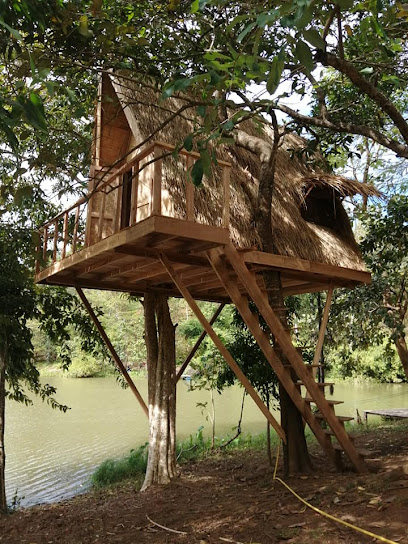
Mama Pap
Experience authentic Laotian flavors at Mama Pap in Beng – where every meal tells a story.
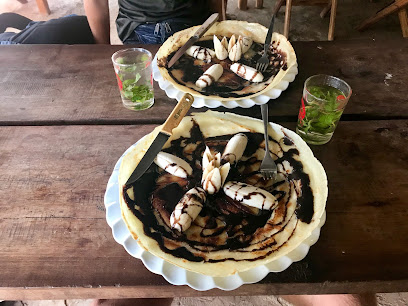
Hongkham Cafe & Restaurant
Discover the essence of Lao cuisine at Hongkham Cafe & Restaurant in Sekong – where flavor meets hospitality.
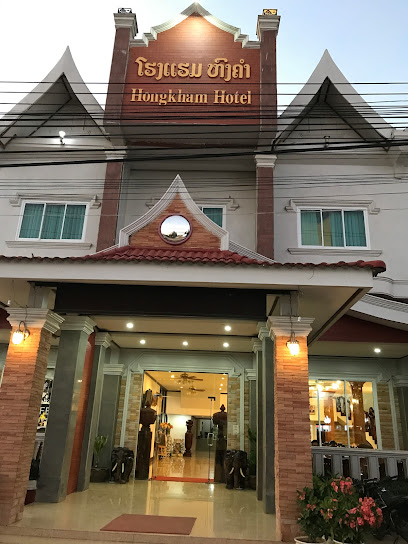
Viphavanh Guesthouse & Restaurant
Discover authentic Laotian flavors at Viphavanh Guesthouse & Restaurant in Thateng – where every dish tells a story.
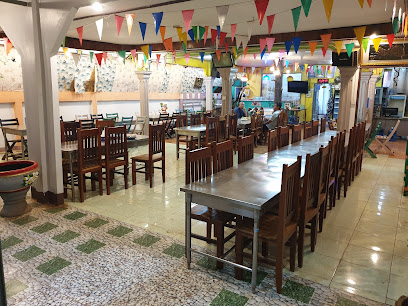
Samaki Guesthouse
Discover tranquility and taste at Samaki Guesthouse in Tadlo – your perfect Laotian getaway with exquisite local cuisine.
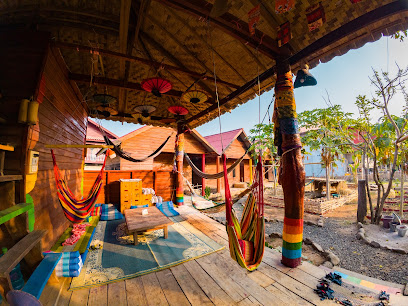
Me Nang Restaurant
Experience authentic Laotian cuisine at Me Nang Restaurant in Paksong – a delightful culinary journey awaits every visitor.
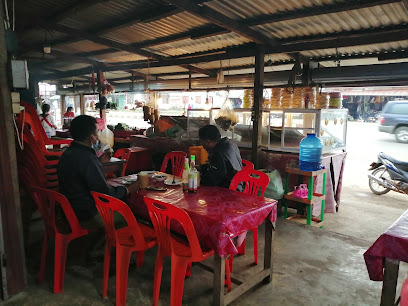
Cafe' Sinouk Sekong By Pyk
Experience authentic Laotian flavors at Café Sinouk Sekong in Xekong province—where cozy ambiance meets delicious local cuisine.
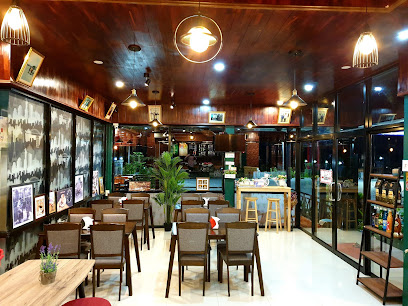
Fandee Island Restaurant - Tad Lo - Bolaven Loop Pakse - ດອນຝັນດີ
Experience authentic Laotian flavors at Fandee Island Restaurant while enjoying stunning views along the Bolaven Loop.

KhamTing Restaurant
Experience authentic Laotian flavors at KhamTing Restaurant in Sekong – a must-visit culinary destination for every traveler.
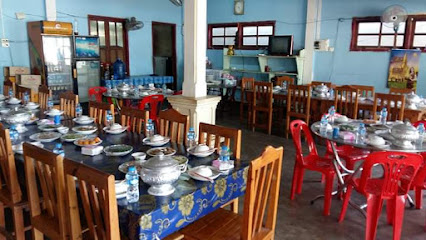
Duong Chit
Discover authentic Laotian cuisine at Duong Chit in Sekong, where unique flavors meet warm hospitality for an unforgettable dining experience.
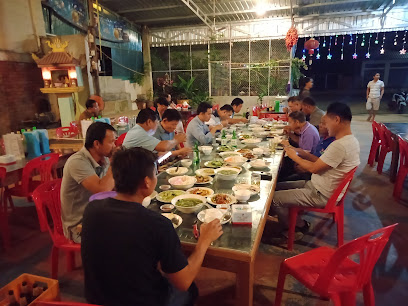
Vilayvone Restaurant
Experience the vibrant flavors of Laos at Vilayvone Restaurant in Salavan, where authentic cuisine meets welcoming ambiance.
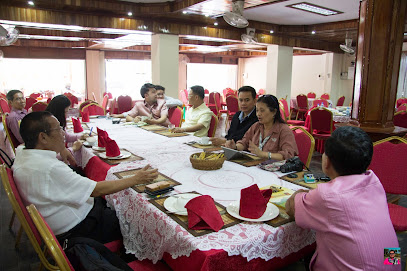
Chè Xanh
Discover authentic Lao flavors at Chè Xanh in Thateng - where every dish tells a story.
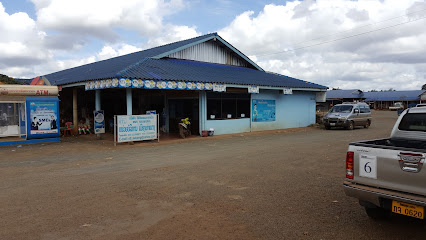
Markets, malls and hidden boutiques
Khamphaen Grocery Shop
Explore the vibrant essence of Sekong at Khamphaen Grocery Shop, where local culture meets everyday shopping in a delightful atmosphere.
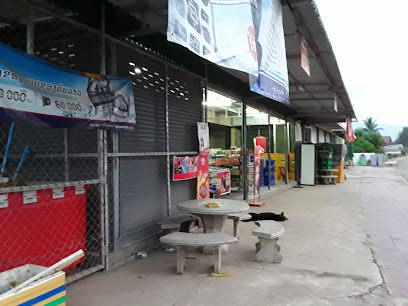
Bến xe sekong
Experience the essence of Laotian culture at Bến xe Sekong, a bustling supermarket filled with local treasures and exotic finds for every traveler.

ຮ້ານ ນູນີ່
Explore the vibrant tastes of Sekong at ຮ້ານ ນູນີ່, your go-to grocery store for local flavors and products.
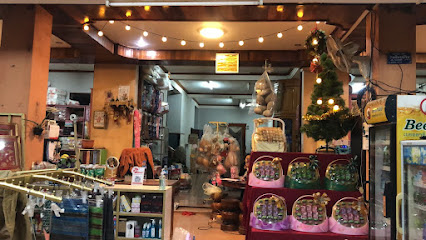
เรึอน ดวง
Discover unique fashion and vibrant styles at เรึอน ดวง, the ultimate clothing store in Chavan, blending tradition with modernity.
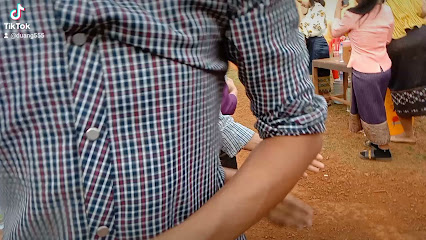
ຮ້ານ ເອັນພີ
Discover the unique blend of traditional and modern fashion at ຮ້ານ ເອັນພີ, a must-visit clothing store in Sekong, Laos.
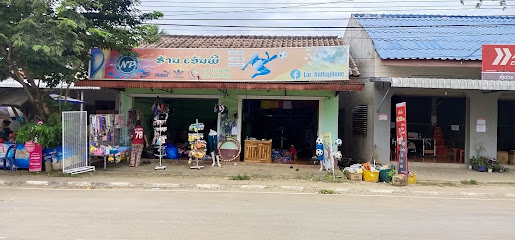
SEKONGCOM
Explore SEKONGCOM, Lamarm's premier computer store for all your tech needs and gadgets while enjoying the local charm.
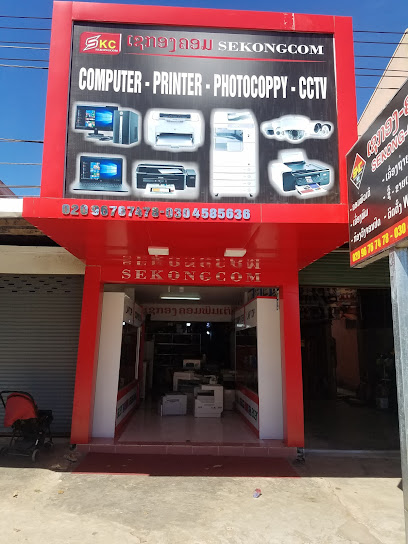
Pyk Mall Sekong
Explore Pyk Mall Sekong: A vibrant shopping destination in Sekong, offering diverse shops, delicious dining, and a taste of local culture.
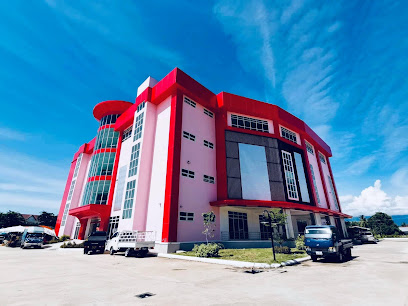
P.y.k Minimart Sekong
Discover the charm of P.y.k Minimart Sekong, a family-friendly grocery store in Honglai, offering local goodies and essentials for your travels.
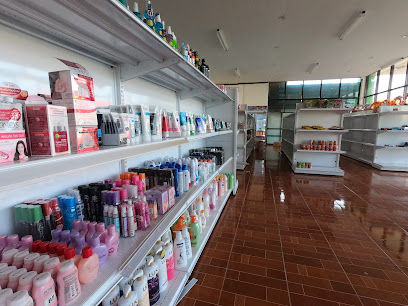
Mymy Shop
Discover unique handcrafted treasures and immerse yourself in Laotian culture at Mymy Shop in Phon, a must-visit destination for tourists.
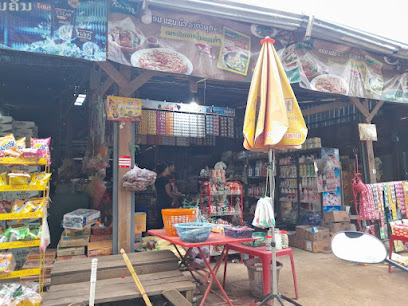
ກາເຟນ້ຳຕົກ ບ້ານໃຫມ່ຫົວເມືອງ
Experience the unique flavors and cozy ambiance of ກາເຟນ້ຳຕົກ ບ້ານໃຫມ່ຫົວເມືອງ, a must-visit coffee shop in Sekong for all coffee lovers.

ປັນຍາຮັກ ຄອມພິວເຕີ
Experience the best of shopping and local culture at ປັນຍາຮັກ ຄອມພິວເຕີ in Dak Cheung, where vibrant retail meets traditional flavors.
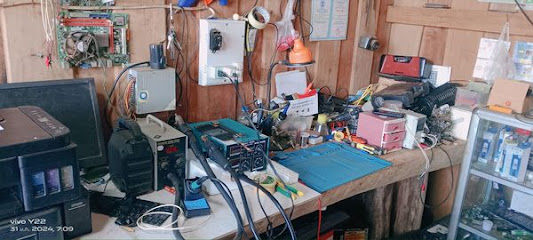
sale All every one need
Discover unique home goods and local crafts in Bengphoukham's charming store, featuring authentic items and friendly service.

Viettien Sekong
Explore local fashion at Viettien Sekong, a vibrant clothing store in Sekong offering unique apparel and accessories reflecting Laotian culture.

ຮ້ານຂາຍເຄື່ອງ ປ້າສອງ ຕະຫຼອດ ເມືອງກະລຶມ
Explore the local culture at 'ຮ້ານຂາຍເຄື່ອງ ປ້າສອງ' in Ban Vak, where authentic craftsmanship meets vibrant shopping.

ຮ້ານເຝີ,ເຂົ້າປຽກ ແລະ ອາຫານຕາມສັ່ງ ນາງກີ້
Experience traditional Laotian flavors at ຮ້ານເຝີ, a culinary treasure in ລະມາມ, offering a warm atmosphere and authentic dishes.

Essential bars & hidden hideouts
Cafe' Sinouk Sekong By Pyk
Experience authentic Lao cuisine amidst the serene beauty of Xekong province at Café Sinouk Sekong, where every dish tells a story.
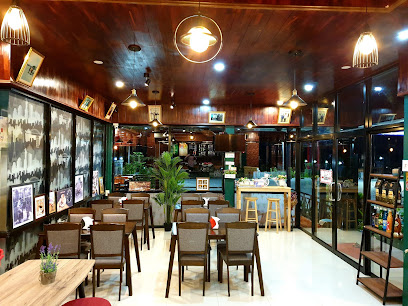
Karaoke
Experience the vibrant nightlife of Pakse at Karaoke, where music, food, and fun come together for an unforgettable evening.
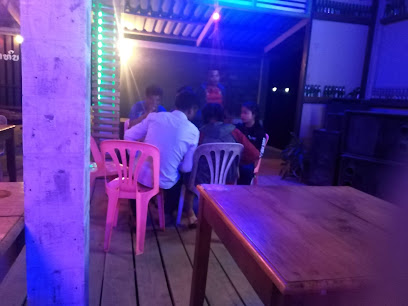
Nhà hàng
Experience authentic Lao cuisine in a cozy atmosphere at Dak Cheung's charming restaurant, perfect for food lovers and cultural explorers.
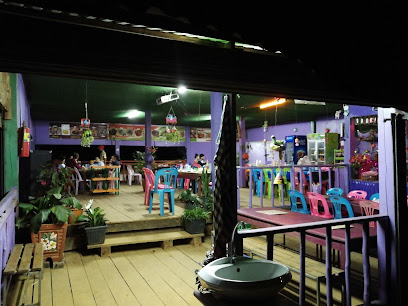
ຮ້ານ ອາຫານ ສະບາຍດີ ; ກາເຟສົດ ດາກຈຶງ
Experience the rich flavors of Dak Cheung at ຮ້ານ ອາຫານ ສະບາຍດີ, a culinary gem offering authentic local dishes in a welcoming atmosphere.
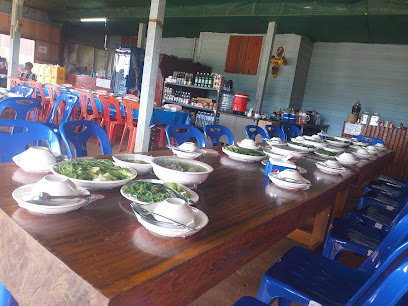
ຮ້ານ 3 ແຍກ ເຊກອງ
Discover the vibrant atmosphere and local charm of ຮ້ານ 3 ແຍກ ເຊກອງ, a top bar in Sekong perfect for unwinding and socializing.
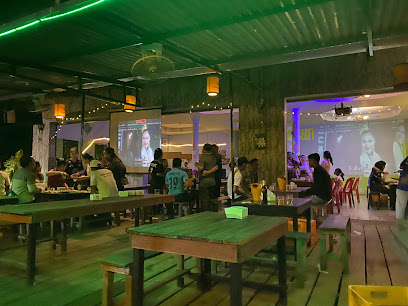
Thu Hiền Karaoke
Discover the energetic karaoke scene at Thu Hiền Karaoke in Sekong, where fun meets local culture in a vibrant bar atmosphere.

ร้านอาหาร
Discover the vibrant atmosphere of Phon’s beloved bar, perfect for socializing with locals and enjoying refreshing drinks in an inviting ambiance.

IDSEA Family Bar
Discover the lively charm of IDSEA Family Bar in Sekong, where family-friendly fun meets local culture and vibrant nightlife.
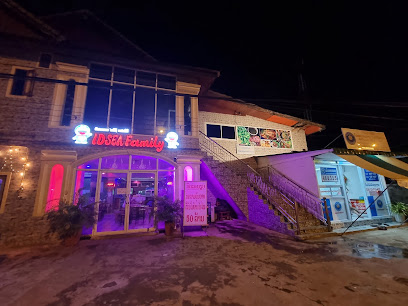
ປີ້ງແບ້
Discover the lively atmosphere and delicious drinks at ປີ້ງແບ້, a must-visit bar in Salavan, Laos for an unforgettable night out.

ຮ້ານອາຫານ-ເກັບແຕ້ມ
Discover the vibrant atmosphere and authentic flavors of Laos at ຮ້ານອາຫານ-ເກັບແຕ້ມ, a charming bar in Thateng.
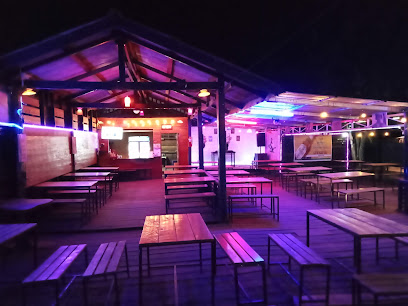
ຮ້ານ ເດິນິວ
Explore ຮ້ານ ເດິນິວ in Laos for a vibrant nightlife experience with crafted drinks and local culture in a lively atmosphere.
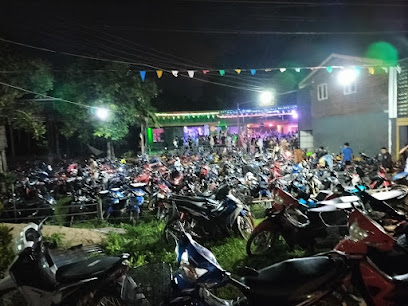
PAKSONG WALKING STREET
Discover the lively Paksong Walking Street, where local culture, street food, and vibrant entertainment blend in an unforgettable experience.

Ms. Kong Xaisomboun
Experience the vibrant nightlife at Ms. Kong Xaisomboun, a bar in Xakhe offering local drinks and a lively atmosphere for socializing.

เรือนสมเเก้ว
Savor the authentic flavors of Laos at เรือนสมเเก้ว, a charming restaurant in Chavan offering traditional dishes made with local ingredients.

ຮ້ານວອດກ້າບາຣ VODKA BAR
Experience the vibrant nightlife of Sekong at VODKA BAR, where unique Laotian drinks and local music create an unforgettable atmosphere.

Local Phrases about Xekong Province
-
- Helloສະບາຍດີ
[sa-bai-dee] - Goodbyeລາພ
[la-pho] - Yesດິນ
[din] - Noບໍ່
[bo] - Please/You're welcomeກະລຸນາ
[ka-louna] - Thank youຂອບໃຈ
[kop jai] - Excuse me/Sorryຂໍໂທດີ
[kho-tho-dee] - How are you?ເດືອນລ້ຽງລາວໜ
[deuan leng lao na] - Fine. And you?ປາກເດືອນ. ແລະເຈົ້າເດືອນ?
[pak deuan. lae jaou deuan] - Do you speak English?ເຈົ້າໃສ່ເພື່ອນອັງກິດແລ້ວບໍ?
[jaou sai phuen angkit laew bo?] - I don't understandຂ້ອຍເປັນການເຂົ້າ
[koi bpen kan kao]
- Helloສະບາຍດີ
-
- I'd like to see the menu, pleaseຂ້ອຍຮ້ານເຫດຜິດຕໍ່ແລະເຈົ້າ
[koi han de pit the lao] - I don't eat meatຂ້ອຍບໍ່ກິບຊີ້
[koi bo gip see] - Cheers!ຂີ້ຄິດ
[ki dit] - I would like to pay, pleaseຂ້ອຍຈ້າງເກິກກີບແລະເຈົ້າ
[koi jang kek kiap lao]
- I'd like to see the menu, pleaseຂ້ອຍຮ້ານເຫດຜິດຕໍ່ແລະເຈົ້າ
-
- Help!ຊ້ວທະນະ!
[su-than-na] - Go away!ໄດ້ສະບາຍ!
[dai sa-bai] - Call the Police!ໂທ້ຊົມພະພານ!
[tho som pha-phan] - Call a doctor!ໂທ້ທ່ານປັກກອງ!
[tho than pak-kong] - I'm lostຂ້ອຍສົນທັງ
[koi son thang] - I'm illຂ້ອຍເຈືອງ
[koi jong]
- Help!ຊ້ວທະນະ!
-
- I'd like to buy...ຂ້ອຍກິບຂຽນ...
[koi gip kian...] - I'm just lookingຂ້ອຍເບິ່ງດວາງ
[koi beng duang] - How much is it?ດີໃຈເຈົ້າ?
[din jai lao?] - That's too expensiveບໍ່ໃຫ້ຄົນມາ
[bo hai khon ma] - Can you lower the price?ເຈົ້າສາມາດຫຼາຍລາຄາໄດ້ບໍ?
[jaou samat lai la ka dai bo?]
- I'd like to buy...ຂ້ອຍກິບຂຽນ...
-
- What time is it?ເວລາໜຶ່ງກ່ວາ?
[welao neung kua?] - It's one o'clockເວລາໜຶ່ງຊົມ
[welao neung som] - Half past (10)ມື້ຫຼາຍ (10)
[me lai sip] - Morningເຊົ້າ
[sao] - Afternoonແລ້ວ
[lao] - Eveningກາງກັນ
[kang kan] - Yesterdayມືດມື່ນ
[me de man] - Todayມືດມື່ນ
[me de man] - Tomorrowມືດອື່ນ
[me eun] - 1ໜຶ່ງ
[neung] - 2ສອງ
[song] - 3ສາມ
[sam] - 4ຫ້າ
[si] - 5ຫ້າຫຸດ
[si hoot] - 6ເຈັດ
[jet] - 7ເຈັດົ້າ
[jet nao] - 8ເຈັດຫົນ
[jet non] - 9ເກົ້າ
[kao] - 10ສິບ
[sip]
- What time is it?ເວລາໜຶ່ງກ່ວາ?
-
- Where's a/the...?ຢູ່ບ່ອນ...
[yu bon...] - What's the address?ຢູ່ບ່ອນໝູ
[yu bon mu] - Can you show me (on the map)?ເຈົ້າສາມາດສະແດງຂ້ອຍໃນອອກ?
[jaou samat san daeng koi nai oak?] - When's the next (bus)?ມື້ອ້ອຍຫຼາຍໜ້າ?
[me oi lai nao?] - A ticket (to ....)ເງີນໃຫ້ປື້ມ (ຫຼາຍ ....)
[ngern hai pum (lai ....)]
- Where's a/the...?ຢູ່ບ່ອນ...
History of Xekong Province
-
Xekong Province, situated in the southeastern part of Laos, has a rich history that dates back to ancient times. The region was inhabited by various indigenous ethnic groups, such as the Alak, Katu, and Nge. These communities have maintained their unique cultural identities and traditions through centuries, contributing to the diverse cultural tapestry of the province.
-
During the 14th century, Xekong Province became part of the Lan Xang Kingdom, one of the largest and most powerful empires in Southeast Asia. The kingdom's influence brought Buddhism and a unified system of governance to the region. Temples, stupas, and other Buddhist monuments from this era can still be found scattered throughout the province, reflecting the historical significance of Lan Xang’s rule.
-
In the late 19th century, Laos, including Xekong Province, came under French colonial rule. The French administration introduced new infrastructure, including roads and bridges, which facilitated easier access to the remote regions of Xekong. The colonial period also saw the introduction of new agricultural practices and the cultivation of crops like coffee and rubber, which continue to be important to the local economy.
-
Xekong Province played a significant role during the Vietnam War, as it was a key area along the Ho Chi Minh Trail. The trail was a critical supply route for North Vietnamese forces, and as a result, Xekong experienced heavy bombing and military activity. The remnants of this period, including bomb craters and war relics, can still be observed in the province, serving as a poignant reminder of its turbulent history.
-
Following the end of the Vietnam War and the establishment of the Lao People's Democratic Republic in 1975, Xekong Province began a slow process of reconstruction and development. Efforts were made to clear unexploded ordnance (UXO) and rebuild infrastructure. Today, Xekong is recognized for its natural beauty, with efforts focused on sustainable tourism and preserving its rich cultural heritage. The province's history is celebrated through various cultural festivals and local traditions that continue to thrive.
-
Xekong Province is home to a mosaic of ethnic groups, each with their own distinct languages, customs, and traditions. The Alak, Katu, Nge, and other ethnic communities practice ancient rituals, music, dance, and craft-making that have been passed down through generations. Visitors can experience traditional ceremonies, such as the Alak's annual buffalo sacrifice festival, which is a vital part of the local spiritual and cultural life.
Xekong Province Essentials
-
Xekong Province is located in the southeastern part of Laos. The nearest international airport is Pakse International Airport (PKZ) in Champasak Province, approximately 200 kilometers away. From Pakse, you can take a bus or hire a private taxi to reach Xekong. The journey typically takes around 4 to 5 hours by road. Alternatively, you can take a domestic flight to Attapeu Airport, which is closer to Xekong, and then continue by road.
-
Within Xekong Province, transportation options include buses, tuk-tuks, and motorbike rentals. Buses and minibuses connect major towns and villages, while tuk-tuks are a convenient option for short distances. Renting a motorbike provides flexibility to explore the region at your own pace. Note that road conditions can be challenging, especially during the rainy season.
-
The official currency in Laos is the Lao Kip (LAK). Credit cards are accepted in some hotels and larger establishments, but it is advisable to carry cash, especially in smaller towns and rural areas. ATMs are available in larger towns within Xekong, but it is recommended to withdraw sufficient cash before traveling to remote areas.
-
Xekong Province is generally safe for tourists. However, it is advisable to take standard precautions. Avoid walking alone at night in unfamiliar areas and keep an eye on your belongings in crowded places. There are no specific high-crime areas targeting tourists, but staying vigilant is always a good practice. Be cautious of unexploded ordnance (UXO) in remote areas and stick to well-trodden paths.
-
In case of emergency, dial 1191 for police assistance and 1623 for medical emergencies. Xekong has local police stations and medical facilities, although services may be limited in rural areas. It is advisable to have travel insurance that covers medical emergencies. Pharmacies are available in larger towns where you can purchase over-the-counter medications.
-
Fashion: Do dress modestly, especially when visiting temples and religious sites. Avoid wearing revealing clothing. Religion: Do respect local customs and traditions. Remove your shoes before entering temples and avoid pointing your feet at religious objects. Public Transport: Do be respectful and give up your seat to elderly passengers. Don't eat or drink on public transport. Greetings: Do greet people with a 'Sabaidee' and a slight bow. Avoid touching someone's head as it is considered impolite. Eating & Drinking: Do try local delicacies and accept food offerings graciously. Don't refuse hospitality, as it is considered impolite.
-
To experience Xekong Province like a local, visit the local markets where you can buy fresh produce and traditional Lao goods. Engage with locals, as they are often friendly and willing to share stories about the region's history and culture. Don't miss visiting the Tad Faek and Tad Se Noi waterfalls for a refreshing experience. For a unique adventure, take a boat ride along the Sekong River, offering scenic views and a chance to observe local wildlife.
Trending Landmarks in Xekong Province
-
Tad Gneuang Waterfall
-
Fandee Island - Tad Lo - Bolaven Loop Pakse - ດອນຝັນດີ
-
Mama Pap
-
Ongkeo Monument Park
-
Shared Happy Farm
-
Tad Hang Waterfall
-
Somphone Homestay Guesthouse
-
Bolaven Plain Laos
-
Tad Faed Waterfall
-
Sekong Monument
-
Cafe' Sinouk Sekong By Pyk
-
Xekong Power Plant Company Limited
-
Sekong Province Laos
-
Nong Fa Lake
-
Dong Ampham National Biodiversity Conservation Area
Nearby Cities to Xekong Province
-
Things To Do in Pakse
-
Things To Do in Da Nang
-
Things To Do in Champasak
-
Things To Do in Hoi An
-
Things To Do in Tam Ky
-
Things To Do in Ubon Ratchathani
-
Things To Do in Savannakhet
-
Things To Do in Thakhek
-
Things To Do in Quy Nhon
-
Things To Do in Buon Ma Thuot
-
Things To Do in Kratie
-
Things To Do in Siem Reap
-
Things To Do in Dalat
-
Things To Do in Nha Trang
-
Things To Do in Udon Thani







